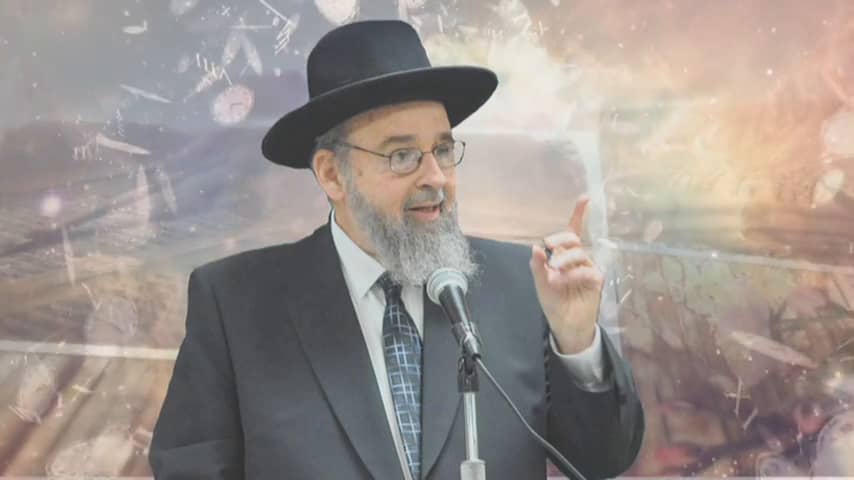“…Hashem declared to them ‘You cried needlessly. Therefore, I will affix this night as a night of crying throughout history.'” (Ta’anis 29a)
The verse states that after the spies brought back their evil tidings regarding the Land of Israel, the nation cried the entire night, the night of the ninth of Av.1 The Talmud states that Hashem declared that since Bnei Yisroel cried needlessly, this night would be affixed as a night of crying throughout history; this is attested to by the many tragedies that befell the Jewish nation on this night, including the destruction of both Batei Mikdash.2 Rashi cites the Talmud which graphically depicts the punishment suffered by the spies.3 The Talmud states that their tongues became elongated, reaching their navels, and worms crawled out of their tongues, entering their stomachs.4 Rashi states that this demise was fitting for them, “mida keneged mida” – “measure for measure” for their sin was performed with the use of their tongues.5 How does the fact that their tongues reached their navels reflect the nature of their transgression?
A mourner is typified as being “dom” – “silent”; it is prohibited to engage a mourner in conversation until he acknowledges you.6 Speech plays a prominent role in defining the sin of the spies and consequently the destruction of both Temples. It is therefore appropriate that Tisha B’Av be commemorated as a day of communal mourning, which requires silence to rectify the sin which involved speech. The Mishna extols the virtue of silence: “kol yom’i gadalti bein hachachamim velo matzasi laguf tov ela shesika” – “all my days I was raised amongst scholars and found nothing better for my body than silence”.7 Why is silence described as beneficial specifically for the body?
The Talmud relates the following adage: “mila b’sela mashtuka b’trin” – “a word is valued at one sela and silence is worth two (sela’im)”8. What additional insight is the Talmud adding to the message of the Mishna? Furthermore, upon what basis does the Talmud conclude that there is a two to one ratio concerning the superiority of silence over speech? One could argue that from the Mishna’ s statement declaring that nothing exceeds the benefits of silence, it would appear that silence far outweighs the benefits of speech. (Cont. on p.2)
The Targum identifies man’s power of speech as the quality which deems him unique amongst all creatures.9 However, the Talmud records that humans beings capable of speaking the language of lower life-forms existed, clearly indicating that other forms of life posses the capacity to communicate.10 Therefore, what is unique about man’s power of speech? There are two sources within a human being from which speech originates. Speech can be either the verbalization of intellectual thought or a visceral reaction which reflects our physical desires and emotions. All life-forms have the capacity to communicate their needs and express their physical desires through sound. Man,however, is the only creature that is able to conceive ideas and articulate these thoughts.
These two forms of speech are quite often in conflict with one another, creating the question “Does man’s mind or man’s body control his speech?” Tension is created when man has the impulse to react verbally but his mind tells him that he should first consider the ramifications of his words. Silence is a sign of control, specifically over the form of speech which is reactionary and reflective of a physical impulse. It is this silence which is extolled by the Mishna with the words “velo matzasi laguf tov ela shesika” – “I found nothing better for my ‘guf’ – ‘body’ than silence”. The Mishna is referring to the silence that indicates the harnessing of physical impulses.
Very often speech is the vehicle through which we react in lieu of a physical action. A prime example of this is “loshon harah” – “defamatory speech”. The Torah refers to loshon harah as a “makah b’seiser” – “a blow struck surreptitiously”; loshon harah, although verbal in nature, is the defamer’s sophisticated outlet for physically striking his victim. 11Since loshon harah reflects a person’s lack of control over his body, the punishment for loshon harah is tzora’as, a malady which attacks a person’s body.12 Similarly, the fate suffered by the spies corresponds exactly to the nature of their sin. The term “visceral”, which defines a thought that is reactionary and emotional rather than intellectually formulated, literally means “from the gut”, viscera being the soft internal organs of the body, especially those contained within the abdominal cavity. The spies’ tongues reaching their navels alludes to the form of speech for which they were culpable, speech emanating from the stomach, not the mind.
The Talmud describes a human being as an amalgamation of two entities, the mind and the body.13 A person whose body reacts in an unconstrained manner is considered to possess only one entity, for under such circumstances the mind is of no benefit to him. If however, a person’s mind is able to subjugate his body, then that individual is comprised of both entities, for his mind is able to harness the energies of his body. It is this insight that the Talmud is offering into the Mishna which extols the virtue of silence; “speech is one”, i.e. a person whose body controls his speech possesses only one entity. Silence, which reflects a mastery of the mind over the body is “two”, i.e. a person who benefits from both the mind and body possesses both entities.
1.Bamidbar 14:1 2.Taanis 29a, Rashi to Tehillim 106:27 3.Bamidbar 14:37 4.Sotah 35a 5.14:37 6.Moed Katan 28b, Shulchan Aruch Yoreh Deah 286:1 7.Avos 1:17 8.Megilla 18a 9.Bereishis 2:7 10.Bava Basra 134a 11.Devarim 27:14 12.Vayikra 14:4 See Rashi 13. See Sanhedrin 39a See Juggler and the King, Feldman 1990 p.6


